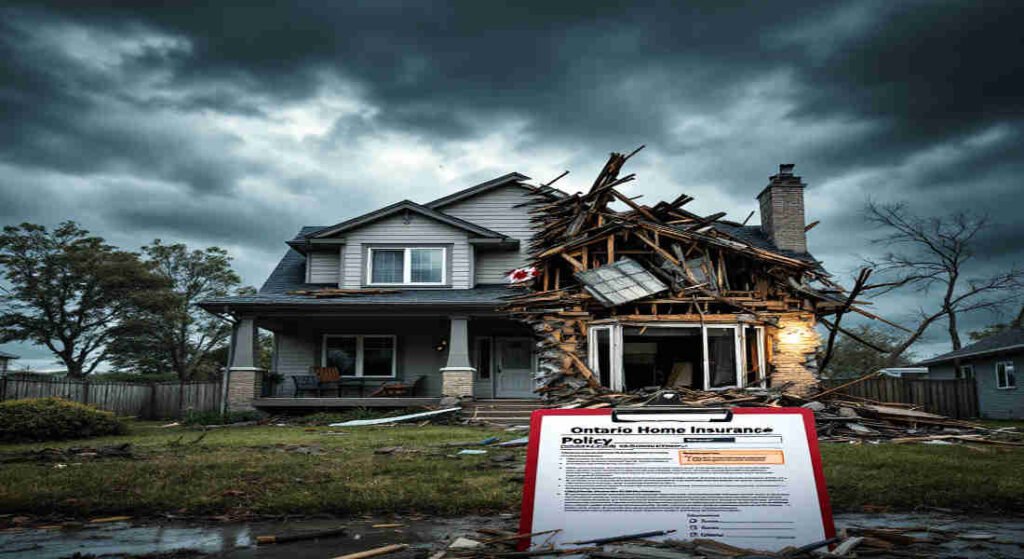Tornadoes are one of nature’s most powerful and unpredictable forces, capable of causing significant destruction in mere minutes. While Ontario isn’t typically known as “Tornado Alley,” the province does experience its fair share of tornadoes, particularly in regions like Southwestern Ontario, Windsor, London, and Barrie. Over the years, the frequency and severity of these storms have increased, drawing attention to the potential risks faced by homeowners.
When tornadoes strike, they can leave behind a devastating trail of damage to homes, property, and belongings. This raises an important question for homeowners: does home insurance cover tornado damage in Ontario? Understanding how home insurance works in such scenarios is not just helpful—it’s essential for peace of mind.
Understanding Tornadoes in Ontario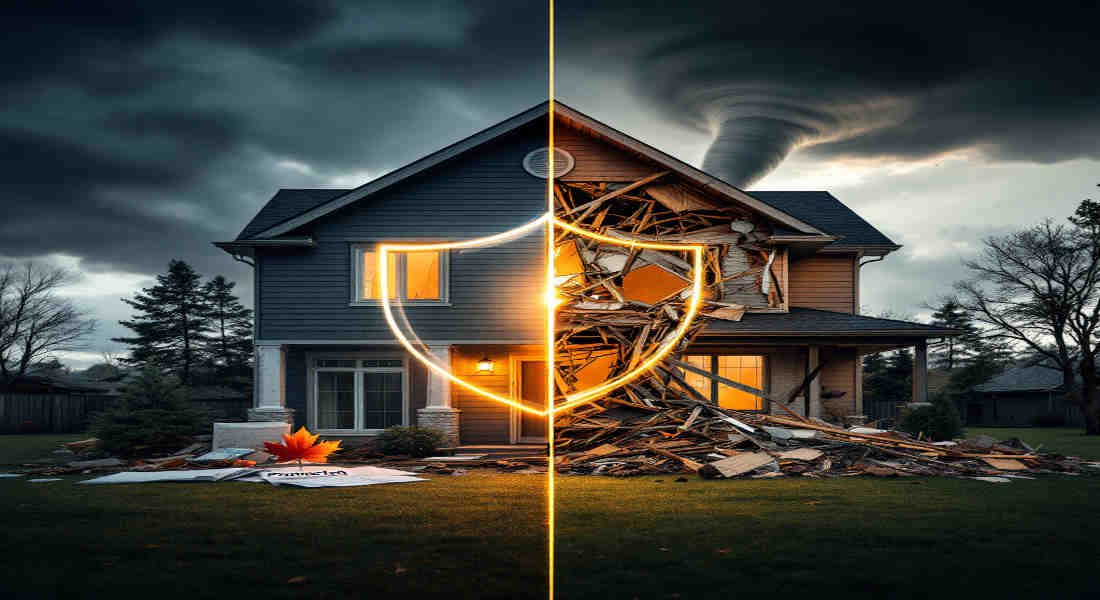
What Is a Tornado?
A tornado is a rapidly rotating column of air that extends from a thunderstorm to the ground. These violent windstorms are often characterized by their funnel-shaped clouds and their ability to cause widespread destruction in a short period. Tornadoes are classified using the Enhanced Fujita (EF) Scale, which ranks them based on wind speed and the damage they cause:
EF RatingWind Speed (km/h)Damage Description
EF0 105–137 Minor damage, broken branches
EF1 138–177 Moderate damage, roofs stripped
EF2 178–217 Significant damage, walls torn off
EF3 218–266 Severe damage, homes destroyed
EF4+ 267+ Extreme damage, large-scale destruction
Tornado Trends in Ontario
Ontario experiences an average of 12 tornadoes per year, with most occurring between May and September. Southwestern Ontario, in particular, sees higher tornado activity due to its flat terrain and proximity to the Great Lakes, which create ideal conditions for severe thunderstorms.
Although EF4+ tornadoes are rare in Ontario, EF0 to EF3 tornadoes are more common, and they can still cause significant damage to homes and properties. With climate change leading to more extreme weather patterns, the likelihood of severe storms and tornadoes has been on the rise in recent years.
What Does Home Insurance Typically Cover in Ontario?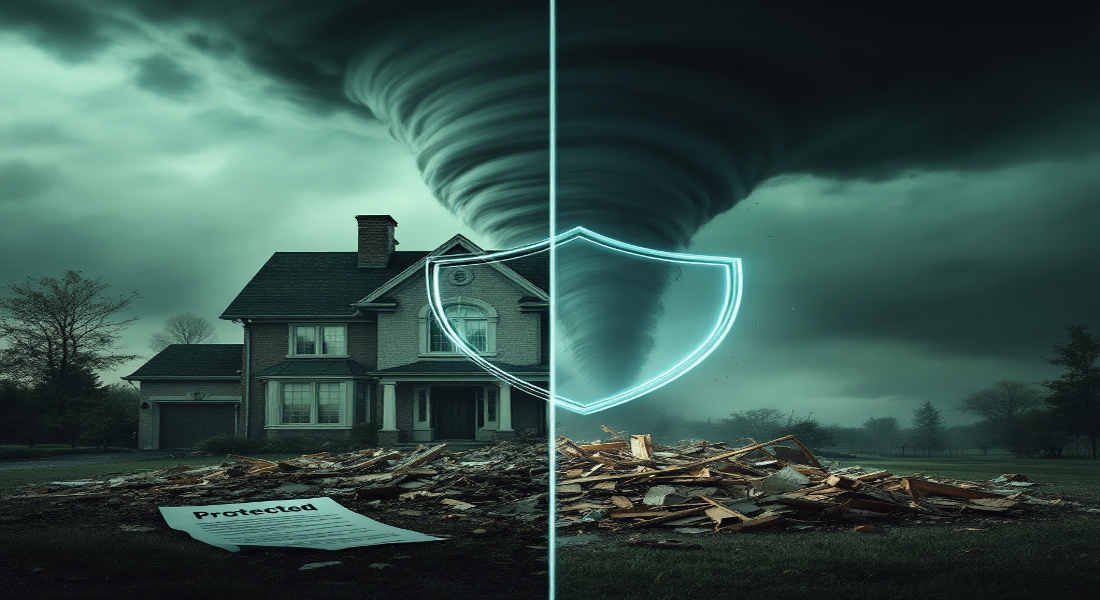
If you’re wondering if home insurance covers tornado damage in Ontario, the good news is that most standard policies do provide coverage for tornado-related damage. However, it’s essential to understand the specifics of what is and isn’t covered.
You may also read (home insurance for hurricanes).
Common Perils Covered by Home Insurance
Home insurance in Ontario generally covers damage caused by:
- Wind and hail: Tornadoes are windstorms, so damage caused by strong winds is typically included.
- Flying debris: Objects propelled by tornado winds, such as tree branches or outdoor furniture, are covered if they cause damage to your property.
- Falling trees: If a tornado uproots a tree and damages your home, standard policies often cover the repairs.
Tornado-Specific Coverage
Here’s a closer look at how tornado damage is addressed in standard home insurance policies:
Structural Damage
Damage to the main structure of your home—such as the roof, walls, doors, and windows—is usually covered. For example, if a tornado tears off your roof, your insurance policy will likely pay for repairs or replacement.
Detached Structures
Structures like garages, sheds, and fences are also typically covered under most policies, though coverage limits may vary.
Personal Property
Items inside your home, such as furniture, electronics, and clothing, are covered against tornado damage. Depending on your policy, you might receive compensation based on the actual cash value (depreciated value) or the replacement cost (full cost to replace the item).
Additional Living Expenses (ALE)
If your home becomes uninhabitable due to tornado damage, your insurance may cover temporary living expenses, such as hotel stays, meals, or alternative housing.
What Isn’t Covered?
While home insurance provides broad protection, there are certain exclusions to be aware of:
- Flood damage: If heavy rain from a tornado causes flooding, this type of damage is generally not covered unless you have a separate flood insurance policy.
- Maintenance-related issues: Damage due to neglect, such as rotting trees falling on your home, is not covered.
- Coverage limits: Insurance policies have limits, so it’s crucial to ensure your coverage is sufficient to rebuild your home and replace your belongings.
How Does Home Insurance Cover Tornado Damage in Ontario?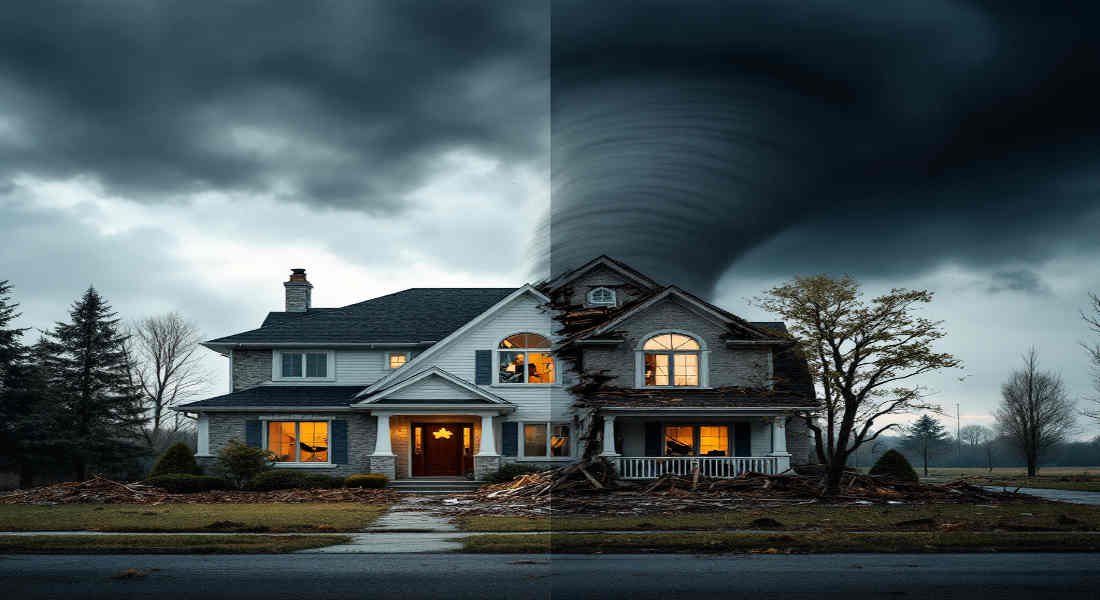
Key Coverage Components
Dwelling Coverage
Dwelling coverage pays for repairs to your home’s structure. For example, if a tornado rips off your roof, this coverage will cover the costs of repair or replacement.
You may also read (property tax for mobile homes).
Personal Property Coverage
This protects your belongings inside the home. Policies vary between offering replacement cost or actual cash value coverage, so check your policy to understand how your items will be valued.
Additional Living Expenses (ALE)
If you’re displaced due to tornado damage, ALE will cover temporary housing, meals, and other necessary expenses.
Deductibles and Limits
When filing a claim, you’ll need to pay a deductible—the amount you’re responsible for before your insurance kicks in. Coverage limits also apply, so it’s essential to ensure your policy provides adequate protection.
Avoiding Coverage Gaps
To avoid unpleasant surprises, consider these steps:
- Review your policy regularly with your insurance broker.
- Consider additional endorsements for flood or wind damage if needed.
- Upgrade your coverage to ensure it reflects the current value of your home and belongings.
Steps to Take If Your Home Is Damaged by a Tornado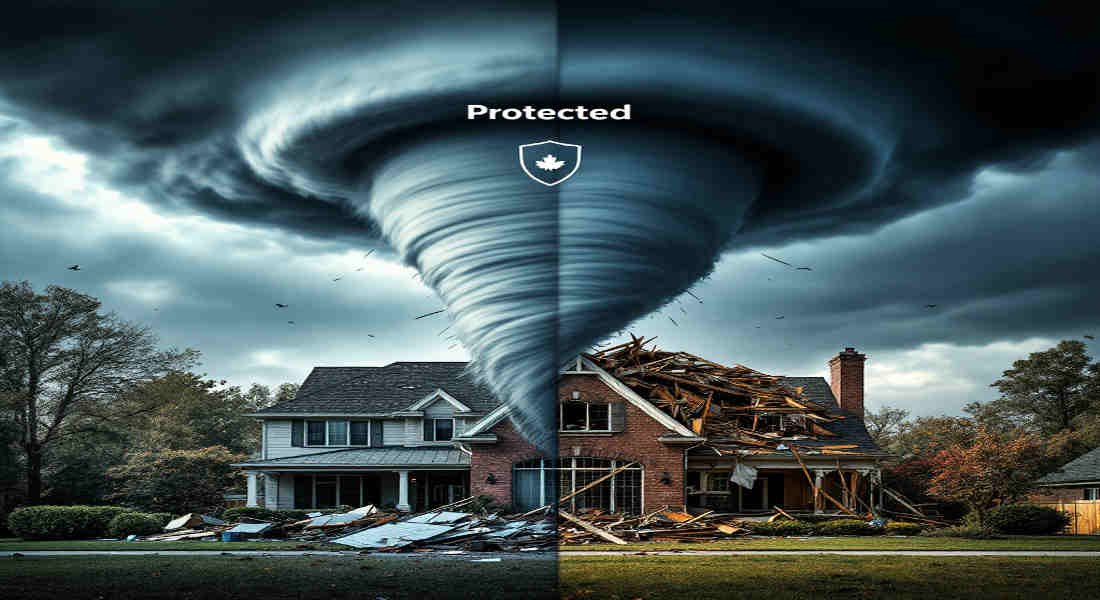
If disaster strikes, here’s a step-by-step guide to managing the aftermath:
Immediate Actions
- Ensure safety: Evacuate if necessary and avoid damaged areas.
- Secure your property: Cover openings to prevent further damage.
Document the Damage
Take photos and videos of all affected areas, including structural damage, personal belongings, and debris.
Contact Your Insurance Provider
Notify your insurance company or broker as soon as possible. Please provide them with documentation and be ready to discuss the extent of the damage.
Temporary Repairs and Expenses
Make temporary repairs to prevent further damage, such as covering broken windows or tarping your roof. Keep all receipts for reimbursement.
Working with Adjusters and Contractors
Collaborate with your insurance adjuster and hire licensed contractors for repairs. Be cautious of scams following major disasters.
How to Prepare and Protect Your Home from Tornado Damage
Preparation is key when it comes to minimizing tornado damage. Consider these tips:
- Home Maintenance: Keep trees trimmed and remove loose items from your yard.
- Storm-Resistant Upgrades: Invest in reinforced roofs, impact-resistant windows, and other storm-proofing measures.
- Emergency Plan: Create a family safety plan and stock up on emergency supplies.
- Insurance Review: Ensure your coverage is up-to-date and includes adequate protection for tornado damage.
You may also read (damage coverage in home insurance).

